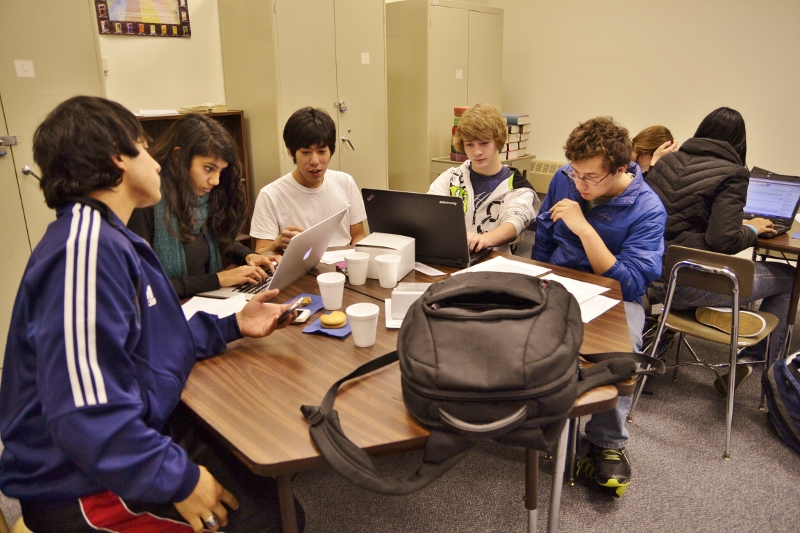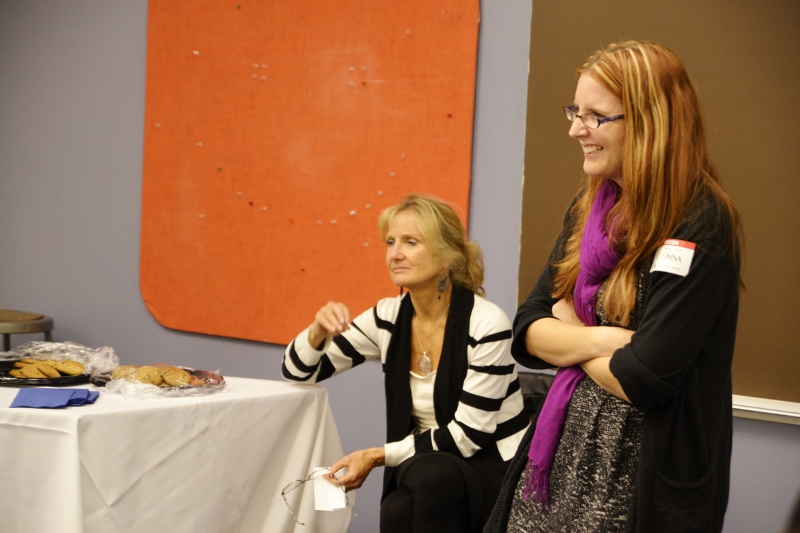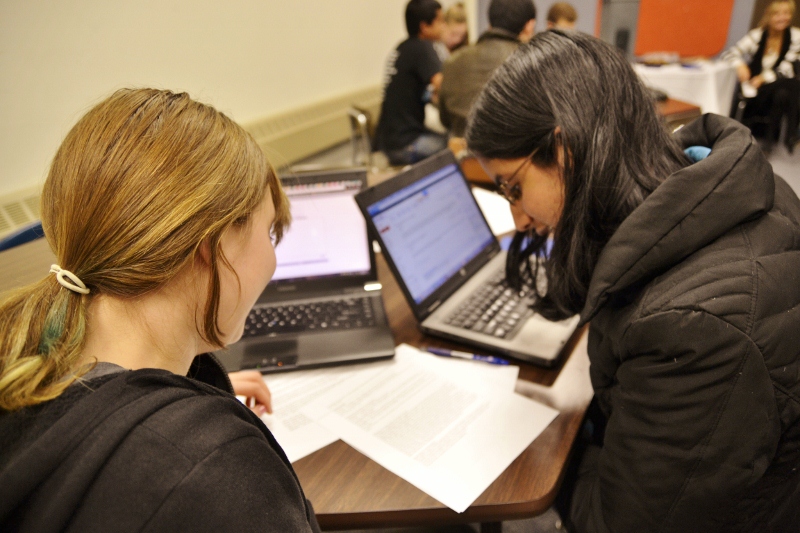Who? What? When? Where? Why? How? For many journalists, effective newspaper articles must answer these essential questions, commonly referred to as 5 Ws and 1 H. The challenge is effectively integrating these components into an article.
Jenette Sturges, an education reporter, and Denise Crosby, a senior columnist, from the Aurora Beacon News hosted a thought-provoking journalism workshop at IMSA regarding these topics on this past Thursday. Giving various tips ranging from finding credible information to gaining a unique perspective on “zombie” marathons, these knowledgeable journalists shared several of their valuable experiences with Acronym. For instance, a prevalent issue that writers face is finding the inspiration for an article. Addressing this concern, Denise Crosby states, “There is a story in every single person you meet; you just have to find it.” She advised us to keep in touch with our community and to use them as sources of inspiration. Other useful pieces of advice were to discover a true writer’s voice and to allow passion to show through writing.
These writers gave a glimpse into the professional environment of journalism through a fast-paced, hectic activity. In the scenario, each student was given the responsibilities of either an education reporter or an editor. The students then paired up to cover a potential teachers’ strike. Each duo had to quickly release information before other pairs, or “publications,” to increase readership. In a very limited time, these “reporters” interviewed “witnesses” and read long, tedious negotiation contracts to research more information. Editors, on the other hand, revised the writer’s articles and wrote press releases on other news, such as local fire breakouts. On top of all this chaos, Ms. Sturges repeatedly yelled at the writers to update Twitter and submit articles.

Ashwin, Kaylee, Sean, Mason, and Andrew
Through this hectic activity, my respect increased for the amount of work that journalists invest to spread news to the community. Cherish Kim, the Opinions Section Editor for Acronym, stated, “ I gained useful insight as to quickly creating articles under extreme pressure. It was an interesting experience.” However, she was mostly relieved that Acronym writers are not subject to the same time crunches as professional journalists. According to Swedish researchers, working to tight deadlines can increase the risk of heart attack six-fold (http://news.bbc.co.uk/2/hi/health/4092445.stm) (Disclaimer: Acronym does not take any responsibility for the failure to receive extensions using this article). Perhaps the insertion of “dead” in “deadline” is logical. So, a word of advice to all of the teachers and newspaper editors: in order to have long-lasting writers, give more lenient “deadlines.”
We would like to especially thank Denise Crosby and Jenette Sturges from the Aurora Beacon for taking time out of their schedule to share their expertise with us.







Be the first to comment on "Journalists’ Advice to Aspiring Journalists"